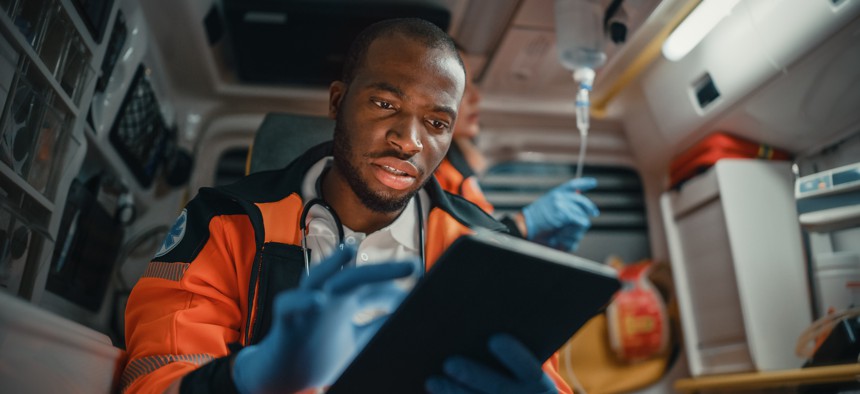3 applications driving 5G in public safety

gorodenkoff/Getty Images
5G’s network capacity, internet-of-things support and low latency will power the emerging technologies responders have been waiting for.
Moore’s Law says that the number of transistors on a microchip will double every two years.
Wildly ambitious when Gordon Moore posited the theory in 1965, it has been impressively accurate. So, while some may think that 5G-based mission-critical broadband communications is years out, history shows that progress will continue to accelerate. With 5G-enabled use cases already starting to be deployed, it’s only a matter of time before the demand for capacity, massive internet of things (IoT) support and low latency mean the best way forward is with 5G.
Using the example of a fire in an urban skyscraper, here are three applications that will drive near-term 5G demand.
App #1: Live video streams
A significant number of first responders will be mobilized in this scenario, including firefighters, police, emergency medical services and more. The teams will, by necessity, gather in a specific spot and operate simultaneously. If each of them is equipped with a camera and they’re streaming a high-definition live video feed back to the command and control center, then they will need a lot of network capacity.
This type of hot-spot coverage is a clear driver for 5G, as the technology brings significant extra capacity.
With these live feeds, command and control will have an extremely good understanding of the situation and be able to provide the most timely and well-informed guidance. In this scenario, 5G-level capacity could mean more lives saved and greater safety and security for the first responders.
App #2: Medical assistance
In a high-rise fire, on-site paramedics will be tending to injuries. Imagine if the ambulances were equipped with live-video streaming capabilities. Then, they’re not only able to provide emergency medical assistance, but they can also contact doctors in a hospital for even more expert advice to help the seriously wounded.
EMS teams could stream video of the patient and someday with 5G could even stream radiography files—which can be massive in size and need considerable capacity to stream in real-time. 5G will facilitate real-time interaction between remote hospital experts and on-site teams, reducing critical time to provide care.
App #3: Massive IoT support
Hundreds of firefighters are likely to be on-site in such an emergency. It’s possible to equip each of the firefighters with IoT sensors, which will allow command and control to monitor the health of each firefighter, including their heartbeat and respiration. Sensors could also monitor the temperature within the building and detect any hazardous gases, alerting command and control of concerns so informed decisions can be made.
However, achieving this level of on-site monitoring requires multiple IoT sensors per firefighter. Multiply this by the number of firefighters, and the requirement for capacity and latency will be significant.
Massive IoT support needs 5G to maintain this level of constant surveillance and real-time response.
Closer than you think?
Beyond these three applications, there are two other potential drivers for 5G capacity and capabilities in a public safety emergency.
The first is drones. They can be equipped with both high-definition and thermal cameras, which send video back to command and control. Once multiple drones are operating in the same area as first responders, 5G will ensure the capacity for high-quality, real-time video streaming to support informed decision-making.
The second is remotely controlled vehicles, which may be deployed in more hazardous environments. They would require 5G capacity and low latency for wireless remote control.
5G is coming
Ultimately, it is the interest in video streaming that will drive near-term demand for 5G. Once these kinds of applications prove themselves in the field, and first responders see their benefits, demand will grow exponentially, pushing capacity and latency requirements.
IoT should prove to be equally beneficial to the health and safety of first responders and push the development of more 5G sensors. Again, it is the benefits—once experienced—that will drive the uptake.
Stay tuned, as we are on the cusp of great change with 5G, which can only benefit our public safety agencies and those that they care for.
Thomas Rehberg is head of public safety at Nokia.
NEXT STORY: One state’s grant management breakthrough





